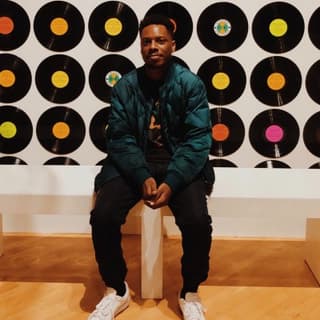
Humans aren’t perfect. In art and creativity, perfection isn’t the goal. As AI races toward flawlessness, the cracks, quirks, and rough edges of human-made work stand out more than ever. Those imperfections are not mistakes to remove but traces of a human hand, quiet proof that something real was made.
Darryl Sharp, Senior Motion Designer at RCA Records, has built his career blending music, media, and design. With senior roles at Warner Music Group and Netflix, he brings a grounded view of how AI fits into professional creative work. His insight moves the conversation beyond fear of replacement to a deeper question: what makes human creativity worth protecting in the first place?
"AI-generated art often lacks heart and depth because the one thing AI is always missing is imperfection. That’s what people really gravitate towards. It's those small, human moments that make something real," says Sharp. As audiences begin to question the authenticity of digital content, Sharp notes that the creative process itself has become a new form of currency. Creators are beginning to increasingly share their creative process, proving the art is grounded in trial, error, and tangible human effort.
- Show your work: "As we scroll through social media, so much looks incredible that it’s hard to tell what’s human-made. In response, artists are becoming adamant about sharing their process. Sharing time-lapses of making things with their bare hands is about proving the human aspect of it all," he explains.
Sharp acknowledges the professional pressure from tools that can animate an album cover "at the drop of a hat." But instead of playing defense, he reframes the challenge as a creative mandate: use AI as a benchmark to make human art better. The goal is to elevate human-led projects to a level of ambition that AI can’t easily replicate.
- Ambitionz az a Cultah: Sharp points to the non-consensual use of deceased artists’ likenesses as content that feels culturally empty. "When you see these posthumous AI executions, like a video of Tupac eating ice cream, it comes across as silly. You have to ask, how is that pushing the culture forward? Is it culturally impactful, or is it just a very well-designed, beautiful meme?"
The distinction between a meme and meaningful art highlights his core point: AI is a powerful remix tool, but it doesn’t create the source material. Originality still stems from lived human experience, and as authentic creation becomes rarer, its value may increase. AI works with the data it's given, but it's humans who create the novel experiences that become that data.
- Humans as the source: "Ultimately, we are the source. When someone uses a tool like Midjourney, they start with a reference photo and a prompt. Those references already exist because humans created them. Technology isn’t inventing new perspectives, it’s just finding ways to imitate or multiply the ones we’ve already made," Sharp explains.
- All art, no heart: He warns that skipping the hard work of learning a craft may produce something polished but empty, trading emotional depth for technical ease. "The beauty of art is that it reveals who you are. With AI, there’s a temptation to skip the process and just tell the tool to make something cool. But when that happens, the story disappears. You have to ask yourself: where’s the heart in the art?"
That loss of heart is what separates true art from simple output. And according to Sharp, the difference can be heard, not just seen. He says the proof lives in the moments that feel most alive.
- Alive album: Sharp points to live albums as proof that imperfection moves people, where every unpolished moment carries the story and deepens the bond with the listener. "On a live album, you can hear the crowd and the artist sharing that she wrote a song on a sad day. Those small moments of honesty reveal where the art came from. That vulnerability, the simple admission of feeling something real, is the kind of imperfection that makes art resonate," he says.
- Find your people: "The best thing we can do is keep building human community. The ability to connect and resonate with the people around us is what keeps creativity alive. AI might be amazing, but it is robotic," Sharp continues.
In the end, Sharp doesn’t see AI as a replacement for creators but as fuel for their evolution. Its value lies not in the answers it gives, but in how quickly it helps reveal what doesn’t work, accelerating the process of discovery.
"We grow as creators by continuing to fail at a faster pace. With AI, we can see the possibilities and immediately recognize what doesn’t work. That faster cycle of learning and adaptation is what makes us better creators. That is the beauty of AI," he concludes.
